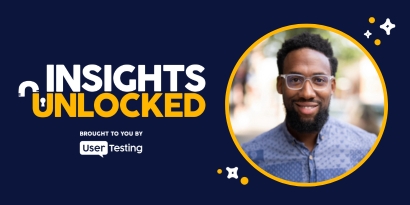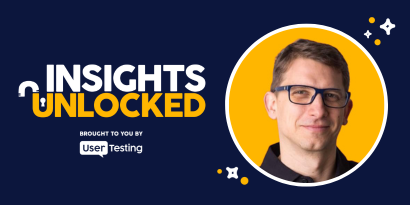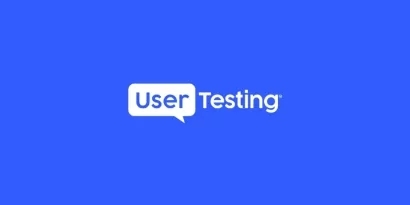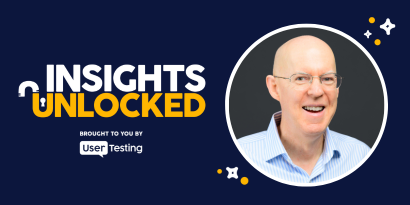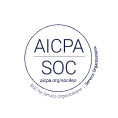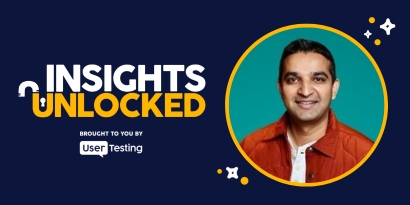
Episode 195 | November 03, 2025
AI employees and the future of work with Surojit Chatterjee
Discover how AI employees are transforming the workplace with Surojit Chatterjee. Learn what it means to build for the future of work—starting now.
The rise of AI employees: How work is being redefined from the inside out
When was the last time you wished a repetitive task could just… do itself? For many professionals, the real bottleneck in productivity isn’t creativity or decision-making—it’s the daily grind of routine tasks.
Enter AI employees, a concept that’s shifting from theoretical to tactical faster than most organizations are prepared for.
On a recent episode of Insights Unlocked, Surojit Chatterjee, former product leader at Coinbase and Google, and now the founder and CEO of Ema, sat down with UserTesting host Mike Mace to talk about how generative AI is turning the enterprise inside out. With experience scaling products at Google and guiding Coinbase through its IPO, Surojit is no stranger to innovation. But his latest venture may be his most ambitious yet: creating AI-powered agents that function as intelligent digital coworkers—not just tools.
“Every enterprise can be 10 to 60 times more productive,” Surojit said. “But it requires reimagining the way work is structured—and who's doing it.”
Why the workplace is overdue for transformation
Despite decades of technological advancement, much of today’s enterprise work remains rigid, repetitive, and manually intensive. Software systems are often stitched together with human labor filling in the gaps—what Surojit calls “soul-crushing work.”
From filling out forms to reconciling documents, this manual labor persists not because it's high-value, but because legacy systems were never designed to adapt. “Historically, enterprises had to morph their processes to suit the software,” he explained. “Now, with AI-powered workflows, the software can finally adapt to the enterprise.”
This shift isn't incremental—it’s architectural. It represents a movement from static, inflexible platforms to AI agents that can reshape themselves in real time, responding to specific business needs, inputs, and feedback loops.
Beyond tools: Thinking of AI as a colleague
Much of the past discourse around AI has centered on it being a tool—like a better calculator or faster search engine. But Surojit urges leaders to embrace a new metaphor: AI as a thought partner.
“You're not just handing off tasks. You're collaborating with something that can reason, respond to feedback, and evolve,” he said. “It’s like hiring an employee that can scale up instantly and never forgets a detail.”
Here’s what makes AI employees distinct from traditional automation:
- They adapt to feedback, just like a human employee would.
- They can take on multi-step, cross-functional workflows.
- They communicate with users in natural language, making them more intuitive to work with.
- They operate with transparency and can explain the "why" behind decisions.
This isn’t just theory. At Ema, the team has already built AI agents for HR, finance, customer support, and sales enablement tasks. Some companies are even running entire departments with AI employees managing first-level inquiries, documents, and approvals.
ON-DEMAND WEBINAR
Effective AI: how to choose the right generative AI features—and build them fast
What it takes to adopt AI employees the right way
For organizations thinking about jumping into AI adoption, Surojit offers a word of caution: “You can’t just sprinkle AI on top of legacy processes and expect transformation.”
Instead, he recommends leaders take a gen-AI business transformation approach:
- Start with processes, not tools: Identify high-friction areas where AI can make a measurable impact, like accounts payable, customer support, or internal HR workflows.
- Rethink roles, not just tasks: AI employees aren’t about shaving off minutes—they’re about redistributing entire categories of work.
- Bring humans along: Reskilling is essential. “People need to learn how to manage AI employees just like they learned to manage human teams,” he noted.
- Design for collaboration: AI-human collaboration is not just a handoff—it’s a dialogue. The best results come when humans guide and refine AI output.
Surojit emphasized that this transformation needs to be structural, not superficial. "If you're still routing expense reports to nine separate inboxes, don't just automate each inbox. Rethink the process altogether."
Why legacy software is under threat
One of the boldest claims from the interview? Most pre-2020 software companies are already legacy.
The reason: They were built on assumptions that no longer hold—fixed workflows, per-seat licenses, and UI that can't adapt on the fly.
Surojit draws a parallel to the shift from CD-ROM software to cloud platforms in the early 2000s. “Companies that failed to adapt got wiped out. And we’re at that moment again,” he said. “Except this time, the pace is even faster.”
Today’s AI-first companies have no legacy bloat, no outdated assumptions. They build for adaptability from the start—offering software that listens, learns, and evolves in near real-time.
As a result, Surojit predicts a coming wave of industry reshuffling: “In every vertical, you’ll see two or three companies pull away dramatically. The rest won’t be able to catch up.”
What the AI-powered workplace of the future looks like
So, what will the future of work actually look like when AI employees are the norm?
According to Surojit, it will feel surprisingly natural—just like self-driving cars quietly became a common sight in cities like Mountain View and San Francisco.
“You’ll work alongside AI agents who handle everything from scheduling to document processing to legal reviews,” he said. “You might even be managed by one.”
Workplaces will become hybrid environments, where human-AI collaboration is as fluid as teamwork among colleagues. Leaders won’t just manage people—they’ll manage a mixed team of humans and intelligent software.
He envisions:
- Employees guiding AI agents the same way they coach junior team members
- AI handling compliance-heavy or data-heavy tasks with precision
- A continuous feedback loop where AI tools improve based on usage patterns and real-time input
This isn't speculative. At Ema, many internal operations already function this way. The HR function? Fully AI-operated. Finance workflows? Largely automated by intelligent agents. “We only hire humans when an AI can’t do it,” he said.
Why productivity gains aren’t evenly distributed—yet
Despite the massive potential of AI in the workplace, some experts argue it hasn’t yet translated into broad productivity gains. Surojit acknowledges this skepticism—but says the problem lies in implementation, not potential.
“If you just inject AI into existing processes without changing how you work, you might only see a 5% gain,” he explained. “But if you re-architect the workflow, you could see 50%, 60%, even 80% improvement.”
That’s why companies must avoid common traps like:
- Treating AI as a plug-in rather than a strategic redesign tool
- Expecting instant results without employee buy-in or training
- Chasing cost-cutting at the expense of long-term innovation
His prediction? Productivity gains will appear uneven—until a few companies get it right. Then the gap will widen dramatically.
Trust, transparency, and the human element
For AI to become a true team member, it must be trusted—and trust comes from transparency.
“We don’t hire a new human and immediately hand them the keys to everything,” Surojit said. “We give them smaller tasks, observe, give feedback. The same applies to AI.”
He highlighted three traits AI employees must demonstrate to earn trust:
- Explainability: Being able to articulate why a decision was made
- Consistency: Delivering reliable results over time
- Adaptability: Adjusting behavior based on human feedback
These aren't just nice-to-haves—they’re non-negotiables for organizations operating in regulated industries or high-stakes environments. It’s also why Ema emphasizes transparency and observability as core design principles.
Final thoughts: a call to action for today’s leaders
If there’s one takeaway from this episode, it’s this: AI employees are coming—and the sooner organizations start preparing, the better.
That means reskilling teams, revisiting workflows, and rethinking software architecture. It also means staying grounded in realism: AI won’t replace every job tomorrow, but it will change what those jobs look like—and who (or what) performs them.
Surojit closed the conversation with this insight, “Your most high-performing employees will be the ones who use AI the most. That’s who’s going to drive growth—not because they’ve been replaced, but because they’ve been empowered.”
Episode links:
- Surojit Chatterjee on LinkedIn
- Ema's website
- UserTesting’s Mike Mace on LinkedIn
- Nathan Isaacs on LinkedIn
- Effective AI: how to choose the right generative AI features—and build them fast — This on-demand webinar explores how generative AI upends legacy software assumptions.
- Exploring AI in experience research — This podcast episode covers how AI augments human insight in enterprise research.
GUIDE

